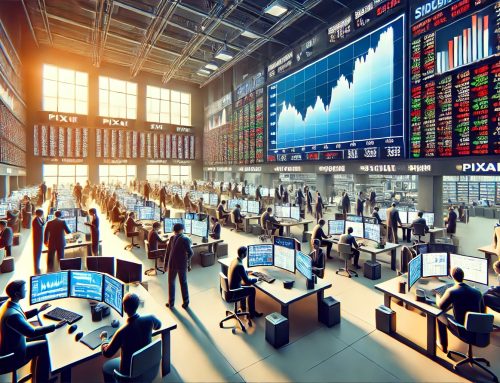August 10, 2022
The value of global trade increased during Q1 2022, although its growth continued to decelerate. Overall, the value of global trade reached a record level of about US$ 7.7 trillion in Q1 2022, an increase of about US$ 1 trillion relative to Q1 2021, and of about US$ 250 million relative to Q4 2021.
Trade in goods (merchandise) and trade in services both grew during Q1 2022. Trade in goods reached about US$ 6.1 trillion (an increase of about 25 per cent relative to Q1 2021, and an increase of about 3.6 per cent relative to Q4 2021). Trade in services totaled about US$ 1.6 trillion (an increase of about 22 per cent relative to Q1 2021, and an increase of about 1.7 per cent relative to Q4 2021). Trade growth is expected to remain positive but continues to slow during Q2 2022.
The positive trend for international trade may soon come to an end. Rising interest rates and the winding down of economic stimulus packages will likely have a negative impact on trade volumes for the rest of 2022. Volatility in commodity prices and geopolitical factors will also continue to make trade developments uncertain. Overall, the evolution of world trade for the remainder of 2022 is likely to be affected by the following factors:
• Slower than expected economic growth
Economic growth forecasts for 2022 are being revised downwards due to rising interest rates, inflationary pressures in many economies, and negative global economic spillovers from the conflict in Ukraine. It is likely that global trade will reflect these macroeconomic trends, with a decrease in trade growth.
• Effect of the conflict in Ukraine
The conflict in Ukraine is putting further upward pressure on the international prices of energy and primary commodities. In the short term, because of the inelastic global demand for food and energy products, rising food and energy prices would likely result in higher trade values, and marginally lower trade volumes.
• Continuing challenges for global supply chains
Risks and uncertainties remain high for global supply chain operations. COVID-19 mitigation measures may continue to create supply disruptions and global economic uncertainties are likely to make investments riskier during 2022. Moreover, long-term trends to shorten supply chains and to diversify suppliers may start to influence international trade in 2022.
• Trade agreements and regionalization trends
Trade agreements that have recently entered into force (e.g. the Regional Comprehensive Economic Partnership and the African Continental Free Trade Area) should provide additional momentum for intra-regional trade. On the other hand, inter-regional trade will likely continue to be negatively affected by rising transport costs, logistic disruptions, and geopolitical frictions.
• Transition towards a greener global economy
Trade patterns are expected to reflect the increasing global demand for products that are environmentally sustainable. While the consequences are expected to influence trade in the medium and long terms, some may already materialize during 2022. This would largely depend on the implementation of government policies regulating the trade of carbon intensive products. Persistently high energy prices may also result in a general increase in the demand and trade of products required to support greener energy alternatives.
• Rising concerns for debt sustainability
Given the record levels of global debt, concerns of debt sustainability are likely to intensify in the coming quarters due to mounting inflationary pressures and associated interest rate hikes. The ongoing tightening of financial conditions is expected to heighten pressure on the most highly indebted governments, amplifying vulnerabilities and negatively affecting investments and international trade flows
Source: United Nations Conference on Trade and Development
Legal Notice: The information in this article is intended for information purposes only. It is not intended for professional information purposes specific to a person or an institution. Every institution has different requirements because of its own circumstances even though they bear a resemblance to each other. Consequently, it is your interest to consult on an expert before taking a decision based on information stated in this article and putting into practice. Neither Karen Audit nor related person or institutions are not responsible for any damages or losses that might occur in consequence of the use of the information in this article by private or formal, real or legal person and institutions.






